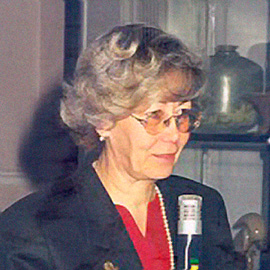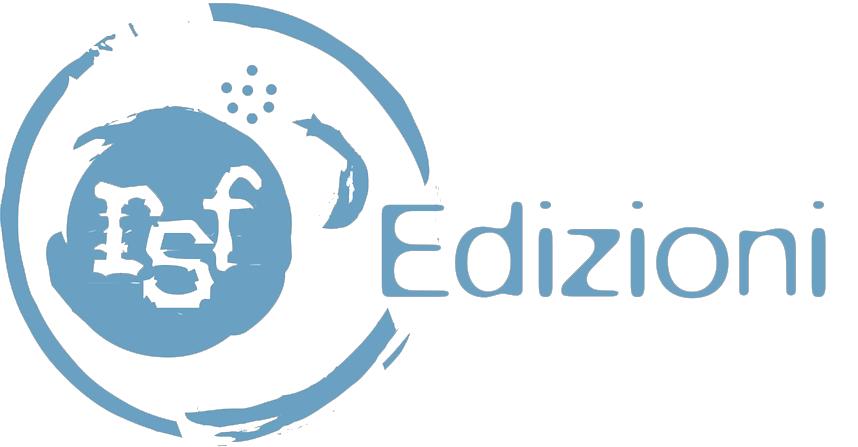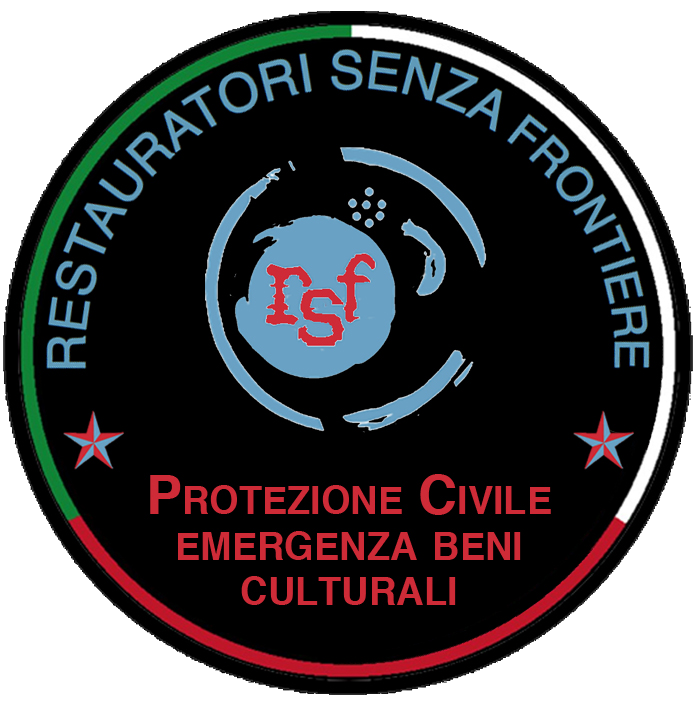
She is graduated in Chemistry at the University La Sapienza in Rome.
From 1964 to 1991 she worked at the Central Institute for Restoration (Rome, Ministry of Heritage and Cultural Activities), where, since 1975, she directed the Laboratory for Testing Material.
From 1991 to the end of 1998 was driven by the Italian Government at ICCROM (International Centre for the Study fo the Preservation and Restoration of Cultural Property), as head of the Program for Science and Technology and later as General Manager Assistant .
From January 1, 1999 she has worked as a freelancer as a scientific consultant for the conservation of cultural heritage. She is an adjunct professor at the University La Sapienza in Rome, where she teached “conservation of stone materials” as part of the degree course in “Science applied to cultural heritage and diagnostics for their conservation.” And she is Honorary Professor at the Universität für Angewante Kunst Wien, Institut für Konservierung und Restaurierung, Vienna.
Her main field of interest and study is about conservation of porous building materials (stone, marble, bricks, mortar, etc..) And wall paintings. Although less frequently, however, she has also dealt with easel paintings.
Among the numerous monuments and works of art of which she edited the preliminary diagnostic studies for the intervention of conservation or for which she has investigated the efficacy of products to be used for such interventions can be remember:
Easel paintings: a group of paintings on board damaged by the flood of Florence and Venice in 1966; the three paintings by M. Merisi da Caravaggio in the church of St. Louis of France, in Rome; the Coronation of the Virgin by G. Bellini in the Pesaro Museum; the Tibetan tangkha of the Tucci collection in the National Museum of Oriental Art in Rome.
Wall paintings: the paintings from the House of Livia in the Roman Forum; the pictorial decorations of the Jewish Catacombs of Villa Torlonia in Rome; the paintings in the crypt of the Abbot Epifanio in S. Vincenzo al Volturno; the Loggia of Psyche and Galatea by Raphael in Villa Farnesina in Rome; the paintings on the vault and the Last Judgement by Michelangelo in the Sistine Chapel.
Monuments and sculptures in stone and artificial stone materials: the cuneiform tablets of Ebla (about 2,500 BC); the polychrome terracotta of Patrica di Mare (the ancient Lavinium ) (IV century BC); the columns of Trajan and Marcus Aurelius in Rome (first century AD ), the Theatre of Marcellus in Rome (first century AD ), the porch of the Church of San Zeno in Verona (XII- XIII century), the interior of the Cathedral of Trani (XII – XIII century); the tomb of Cardinal de Braye by Arnolfo di Cambio at Orvieto (XIII century ), the “Fontana Maggiore” in Perugia (XIII century); the ” Madonna with Child ” (XIV century) in the middle portal of the Orvieto Cathedral; the Arch of Alfonso d’Aragona (XV century) in Naples; the sculpture of ” Madonna delle Anime Oranti” (XV century) in the gable of the church of the same name in Rome; the facade of the Church of St. Croce in Lecce (seventeenth century); the Triton Fountain (XVII century), the Trevi Fountain (XVIII century) and the Fountain of Moses (XVIII century ) in Roma; the sculptures of A. Martini and F. Messina of the Niguarda Hospital in Milan (1937 ); three groups of sculptures by F. Narvaez ( 1950-1955 ) at the Central University of Caracas (Venezuela ); the monumental complex of the ” Four Corners ” in Palermo ( XVII century).
She was a member of the Working Groups RILEM (Réunion Internationale Laboratoires Essais Matériaux) 75 PAN (Pierres Naturelles et artificielles), 25 PEM (Pierres – Erosion – Monuments) and 59 TPM (Traitements – Pierres – Monuments), which were intended to identify standard methods of study in the field of stone materials.
She was one of the promoters of the Committee NORMAL, established by the Ministry for Cultural Heritage and the National Research Council for the definition of standard methodologies for the study of stone material, and she has coordinated the work from 1978 to 1993.
In 2000-2004 she was the president of the Permanent Scientific Committee of the International Congress on “Deterioration and Conservation of Stone,” which is held every four years in research institutions or public bodies, in different countries.
From 2005 to 2008 she was referring to the European project EU-Artech (Access, Research and Technology for the Conservation of Cultural Property), managed by the Dept. of Chemistry, University of Perugia.
She has carried out an intense didactic activity, at the school of the Central Institute for Conservation and at many Italian universities and research centers (University of Tuscia , Viterbo, Faculty of Cultural Heritage; University “La Sapienza” of Rome, Faculty of Science; Pescara , Faculty of Architecture , etc. ) and other countries (Oviedo, Spain; San Salvado , Brazil; Caracas, Venezuela; Istanbul, Turkey; Lucknow India; Tehran, Iran , etc. . ) and at the ICCROM , where she also conceived and organized specialized courses for conservators. She was the holder of Bachelor of Chemistry and Technology of Restoration and Conservation of Materials at the School of Specialization in Restoration of Monuments, University G. D’ Annunzio, Chieti -Pescara , Dept. of Science, History of Architecture and Conservation. She currently teaches ” Conservation and Treatment of stone and wall paintings ” in the Degree Course in Sciences Applied to Cultural Heritage and to Diagnostic for their Conservation ” at the “La Sapienza” University in Rome. In 1998 she organized the first regional course on stone conservation for the countries of Western Asia , held in Persepolis , Iran, in collaboration with the Regional Centre for the Conservation of Cultural Relics of Tehran.
In 1995 she organized an International Symposium on “Methods of Evaluating Products for the Conservation of Porous Building Materials in Monuments.”
In 1998, she coordinated an investigation of the effects of air pollution on cultural heritage in Iran, in relation to the so-called “Gulf War” of 1991. In 2003-2004 he coordinated a second experimental research project on the same subject, on behalf of the “Regional Centre for the Conservation of Cultural Relics” in Tehran.
In 1996, she launched and coordinated a worldwide investigation on the state of scientific research applied to the conservation of cultural heritage and, subsequently, a more specific inquiry concerning the professional figure working in the field of cultural heritage in European countries. Following these initiatives has been realized by ICCROM, a research project for the definition of CVs for the formation of professional figure for the conservation.
She was consultant of the UNESCO for the conservation of Indian monuments such as the Taj Mahal in Agra, the Sun Temple in Konarak, the temples of Khajuraho, the Buddhist Stupa of Sanchi and Sathdara, as well as the Mosque of Omar in Jerusalem.
In 1995 she was a consultant for the Getty Conservation Institute for the study of conservation problems of carved marble lintels of the Holy Sepulchre Church in Jerusalem. Later she continued to work on the conservation of these findings, in collaboration with specialists of the Central Institute of Restoration, on request of the Department of Conservation of the Israel Antiquities Authority.
Currently she continued to work with ICCROM and with the Central Institute of Restoration, as an outside consultant on specific projects. Among consultancy given to other institutions may be mentioned: diagnostic study of the sanctuary ” Shrine of the Bab ” ( Baha’i International Centre, Haifa, Israel); diagnostic study for the conservation of marble and murals of the complex ” Golden Temple ” of Amritsar ( Punjab, India ); restoration of the Amphitheatre Arena ( City of Verona ); conservation of the Cloister of the Cathedral of Cefalù ( Province of Palermo ); conservation of the stone facing of the same cathedral ( Superintendence of Cultural Heritage Palermo ); restoration of the monumental complex of the Quattro Canti (Municipality of Palermo), and conservation of stone facing of the bell tower of the cathedral in Agrigento ( Superintendence of Cultural and Environmental Heritage of Agrigento ), conservation of decorated surfaces of the Domus Aurea in Rome and paintings wall of the church of S. Maria Antiqua ( Archaeological Superintendency of Rome). Collaborate with a research project at the University of Bologna (Faculty of Cultural Heritage) for the development of methods of conservation of stone monuments of the archaeological site of Persepolis (Iran) where she also organized a school yard dedicated to local restorers .
In November 2009 she received the ICCROM Award, in recognition of hes scientific work for the conservation of cultural heritage.
She is the author of over 170 scientific publications and three books:
M.Marabelli, M.TABASSO, Materials of mural painting, Ed. Sistema, Rome, 1977
L.Lazzarini, M.LAURENZI TABASSO, Stone conservation, Ed. CEDAM, Padova, 1986
M.LAURENZI TABASSO, M.Marabelli, The degradation of monuments in Rome in relation to air pollution, Ed. BetaGamma, Viterbo 1992.
She edited the “Materials” section of the “Handbook of Architectural Restoration” (Ed. Mancosu, Rome 2001) and she has written chapters on Natural Stone Materials and Mortars.
She edited (in collaboration with M. Polichetti and C. Seccaroni) the preparation of the volume: Various Authors Tibetan Paintings from the expeditions of Giuseppe Tucci, Materials and Techniques in the light of non-invasive images, De Luca Art Publishers, Rome, 2008; she has also edited the English edition of the same text, published in 2011 by the Editor “Orientalis” with the title “Visibilia Invisibilium”.










